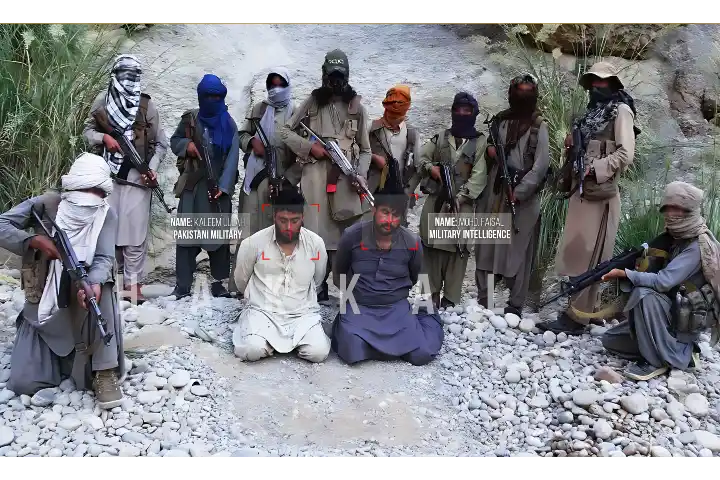The conduct of Baloch armed groups is beginning to raise serious questions about the struggle they claim to represent. The result is a gradual shifting moral landscape in which public sympathy, once only on the side of the Baloch cause, is now divided and to somehow uncertain.
In Balochistan, Pakistan’s largest and most impoverished province, the politics of violence has once again taken center stage. The urgency of the situation is palpable as state repression continues to be a key factor pushing youth toward militancy.
For years, the Pakistani state’s harsh policies of forced disappearances, extrajudicial killings, and blanket crackdowns on political dissent have fuelled anger and resistance among Baloch nationalists. That anger, in many cases, turned into armed rebellion. But now, the insurgency itself is coming under scrutiny, not from the state, but from the very people in whose name it claims to fight.
Recent incidents have accelerated this shift. The targeted killing of Hidayat Buledi, a senior bureaucrat in Surab, and the earlier assassination of Deputy Commissioner Zakir Baloch on the Quetta–Mastung highway last summer triggered a wave of public backlash. That anger even overshadowed the widely publicized rally of the Baloch Yakjehti Committee in Quetta after returning from the Gwadar Raaji Muchi sit-in. Both incidents were viewed not as strategic acts of resistance but as brutal killings of Baloch officials trying to serve in an already complex and challenging environment.
Further complicating the situation is targeting the Levies and police, both composed primarily of Baloch. These men serve under immense pressure from the state, often ordered to implement harsh crackdowns on their own communities. By attacking them along with banks and infrastructure used predominantly by ordinary Baloch citizens, armed groups risk being seen not as liberators but as aggressors. Rather than weakening the state’s grip, such tactics may paradoxically generate sympathy for it. Some now view the violence as a justification for the state’s security apparatus, which is otherwise widely criticized for its abuses.
This sense of disillusionment deepened with the abduction of Hanif Nurzai, the Assistant Commissioner of Tump just a few days before the Islamic festival Eid. A Pashtun, Nurzai was reportedly traveling with his wife to Quetta for Eid when the ethno-nationalist armed group, the Balochistan Liberation Front (BLF) kidnaped him. Beyond the personal tragedy, the incident threatens to unravel the fragile inter-ethnic solidarity between Baloch and Pashtuns. It also hands the state a powerful narrative tool, portraying the armed resistance as indiscriminate, reckless, and increasingly alienated from its own people.
Meanwhile, the growing visibility of insurgent groups’ videos of fighters blocking highways, torching banks, and roaming cities with weapons has left many residents feeling trapped between two sources of power. These high-profile acts are often followed by heavy-handed state operations that sweep up civilians with no ties to militancy. Locals pay the price twice: first through the fear created by militant actions and again in the form of retaliatory crackdowns by security forces. This constant anxiety has become part of daily life for ordinary Baloch citizens, intensifying the sense of urgency and helplessness.
Ironically, the alienation created by these militant tactics allows the state to regain some lost ground. More Baloch youth are reportedly joining state-backed militias, locally known as death squads, often viewed as a reaction to the excesses of the insurgents themselves. These militias, frequently staffed by local recruits, are seen by some as the lesser of two evils. Sympathy for the state may not indicate full support but rather a desperate longing for stability amid rising chaos.
A more worrying concern is that the state and the insurgents now appear locked in a contest for power for its own sake. The state uses force because it can; armed groups use violence because they believe they must. But in doing so, both undermine the legitimacy of their respective causes. A vacuum remains where moderate, non-violent voices have all but vanished.
It is often forgotten that the Baloch movement has never been defined solely by militancy. Civil society actors, student organizations, and peaceful nationalists have long advocated for autonomy, justice, and dignity.
Many of these voices have been silenced by the state, yes, but also by the insurgents. Attacks on Baloch civilians, Levies, and police, coupled with the silence of civil rights groups over such violence, have allowed the state to cast these groups as militant sympathizers. Many are unable to openly condemn militant actions, even as they routinely criticize the state. This one-sided condemnation is now threatening their survival and credibility.
This is the broken middle in Balochistan: a space once defined by dialogue and peaceful mobilization is now squeezed between the heavy boot of the state and the gun of the insurgent. With both sides escalating, ordinary people are left without a viable political alternative. However, it remains crucial to remember that returning to non-violent advocacy, as once demonstrated by civil society leaders and student groups, offers a potential path forward and the only real hope for the future. This potential for a return to non-violence should give us hope in these challenging times.
If the state changed course by ending enforced disappearances, creating space for political expression, and acknowledging legitimate grievances, it could begin de-escalating the conflict. Such a shift may also initiate a discussion about militants and their actions. Until then, the conflict continues not for territory or resources but for narrative and legitimacy.
Power, it seems, has replaced principle. And in a province long denied justice, both the state and the insurgents now risk transforming their struggle into a cycle of violence in which the people suffer the most, and hope remains the most significant casualty.
